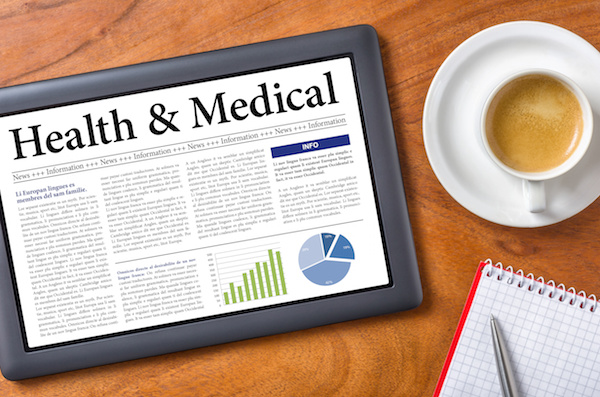
Here are some of the latest health and medical news developments, compiled by the editors of HealthDay:
Make High School Students Learn CPR: Heart Experts
All states should require high school students to learn CPR and how to use automated external defibrillators before they graduate, says an American Heart Association advisory released Monday.
This type of rule would “create a generation that could be trained, ready and willing to act,” said advisory co-author Mary Fran Hazinski, a professor at Vanderbilt University School of Nursing in Nashville, Tenn., the Associated Press reported.
The AHA developed the advisory with the American College of Emergency Physicians and the American Academy of Pediatrics.
Currently, at least 36 states either mandate or promote CPR training in schools, according to the AHA. But this training ranges from suggesting students know the steps of CPR to requiring them to be certified in the potentially life-saving skill, the AP reported.
——
Flu Season Intensifying, Get Vaccinated: Health Officials
Americans who haven’t been vaccinated against the flu are being urged to do so as the flu is hitting the South and New York City hard and is expected to spread to the rest of the nation.
Health officials say there is plenty of vaccine available but it takes about two weeks for its protection to become effective, the Associated Press reported.
Typically, January and February are the worst flu months. So far this flu season, the well-known H3N2 strain of Type A flu is causing the most illnesses in the United States. This strain tends to lead to more pneumonia and other complications than other flu strains.
This season’s vaccine protects against H3N2, H1N1 flu, and a Type B flu that tends to be less severe, the AP reported.
—–
Artificial Cells Mimic Red Blood Cells: Study
Nanoparticles that mimic the flexibility and longevity of red blood cells could lead to the development of better ways to deliver drugs into the body, say U.S. scientists who created the nanoparticles.
“We believe this study represents a real game change for the future of nanomedicine,” study co-lead investigator Joseph DiSimone, of the University of North Carolina, said in a news release, the Los Angeles Times reported.
He said it has been a challenge to create particles that can circulate through the body for extended periods. Their artificial cells were built using a gel material with “tunable elasticity,” — meaning that the scientists could control the cells’ degree of deformability.
After being injected into mice, the softest cells stayed in the bloodstream 30 times longer than the least flexible ones, the Times reported.
The study was published Monday in the journal Proceedings of the National Academy of Sciences.
—–
Michael Douglas Says Throat Tumor Gone
His tumor is gone and actor Michael Douglas says there’s a good chance he’s beaten throat cancer.
In an interview, Douglas said he felt relieved after a “wild, six-month ride,” and will continue to go in for monthly checkups, the Associated Press reported.
The 66-year-old actor also said he had lost 32 pounds but was now working out and had regained 12 pounds.
The taped interview aired Tuesday on NBC’s “Today,” the AP reported.
—–
Sudden Chromosome Destruction Leads to Cancer: Study
Scientists have discovered a major exception to the current theory that a series of mutations over many years cause cells to become cancerous.
Using rapid methods of decoding DNA, the team found that a whole chromosome can suddenly shatter into pieces. If the cells survives this catastrophe, it may become cancerous, The New York Times reported.
About two to three percent of all cancers, and 25 percent of bone cancers, originate in this way, according to the Peter J. Campbell, of the Sanger Institute in England, and colleagues.
“It’s hard to explain why the damage is so catastrophic but so localized,” said Campbell, who believes the damage may be caused by a pulse of radiation, The Times reported.
The study appears in the current issue of the journal Cell.
—–
White House Sides With Companies in Drug Discount Lawsuit
In an unexpected move, the Obama administration is supporting drug companies accused of overcharging public hospitals and clinics that look after large number of poor Americans.
The Supreme Court case involves a lawsuit brought by Santa Clara and Santa Cruz Counties in California against a number of pharmaceutical makers. The lawsuit alleges that hospitals and clinics in the counties didn’t receive obligatory discounts when they bought drugs from the companies, The New York Times reported.
Fearing a rash of lawsuits, the Justice Department officials told the Supreme Court that hospitals and clinics cannot sue drug makers to enforce their right to discounts or to be reimbursed by companies that overcharge.
“You can parse the legal issues, as the Justice Department has done. But the bottom line is that a lot of poor people and a lot of safety-net providers are not getting the discounts they are supposed to receive,” Sara Rosenbaum, a professor of health law and policy at George Washington University, told The Times.
More than 15,000 hospitals and clinics across the U.S. participate in the discount program, which reduces prescription drug prices by 30 to 50 percent. These facilities spend more than $6 billion a year on drugs.
—–

